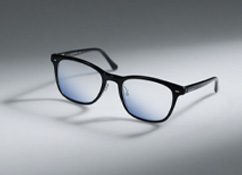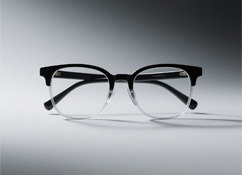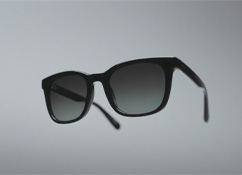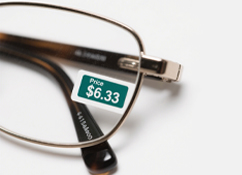With childhood and teen nearsightedness rates staying high, preventing myopia has become a top worry for parents. Kids’ myopia develops in unique ways, tied to concepts like "natural farsightedness buffer," causes of nearsightedness, and prevention strategies. Getting these right is key to keeping your child’s vision sharp.
As kids grow, their eyes have a "natural farsightedness buffer"—like a safety net that delays nearsightedness. Here’s what’s typical for each age:
3 years old: +3.00 diopters (range: +2.50 to +3.50 diopters)
4 years old: +2.50 diopters (range: +2.50 to +3.00 diopters)
5 years old: +2.00 diopters (range: +2.00 to +2.50 diopters)
6 years old: +1.50 diopters (range: +1.50 to +2.00 diopters)
7–15 years old: Gradually decreases; 10–15 year olds often have +0.50 diopters (range: +0.50 to +1.00 diopters)
This buffer isn’t permanent. Too much close-up work (like endless screen time or hunching over books) or not enough time outside can deplete it faster. Once it’s gone, eyes may overgrow, leading to myopia—and once nearsightedness sets in, it’s usually irreversible.
Action step: Get your child’s vision checked regularly. After age 3, a professional eye exam every 6 months helps track changes in their farsightedness buffer.

If both parents have high myopia (over -6.00 diopters), kids are more likely to develop it. But genes aren’t destiny—environment matters. Even with a family history, good habits can delay or reduce nearsightedness.
Too much close-up time: Reading/writing less than 13 inches from the eyes, or for over 30 minutes nonstop, keeps eye muscles tight. This can cause spasms and speed up myopia.
Poor lighting: Too bright, too dim, or glare (like a shiny desk under a white notebook) strains eyes and hurts vision development.
Not enough outdoor time: Studies show 2+ hours outside daily exposes kids to natural light, which triggers the retina to release dopamine—a chemical that stops eyes from overgrowing (a main cause of myopia). Staying indoors raises risk a lot.
Too much screen time: Phones, tablets, and TVs—especially for young kids—harm vision. Blue light and quick eye adjustments (from fast-moving images) speed up nearsightedness.
Picky eating: Lacking nutrients like lutein (in dark green veggies), vitamin A (in liver, dairy), or omega-3s weakens eye health, making myopia more likely.
Good lighting: Use flicker-free desk lamps (around 4000K color temperature) for reading/writing, plus bright room lights. Avoid harsh direct light or shadows.
Proper posture: Set up desks away from window glare. Match chair/desk height to your child’s size—aim for: eyes 1 foot from books, chest 1 fist from the desk, and hand 1 inch from the pen tip. This cuts strain from slouching.
Follow the 20-20-20 rule: Every 20 minutes of close-up activity (screens, books), look at something 20 feet away for 20 seconds. This relaxes tight eye muscles.
Cap screen time: No screens for kids under 3. For 3+, max 1 hour daily, with sessions under 15 minutes. Swap screens for outdoor play, board games, or physical activity.
Aim for 2+ hours of daily outdoor time (hiking, biking, or even playing in the yard). Natural sunlight boosts retinal dopamine, stopping eyes from overgrowing. It’s cheap, easy, and one of the most effective ways to prevent myopia.
Dilated eye exams: Kids need special drops to relax eye muscles during exams—this rules out "pseudomyopia" (temporary blurriness from strained muscles) for accurate results. Under 6s often use atropine drops; over 6s may use faster-acting drops like tropicamide.
Lens guidelines: For 6–18 year olds, lenses should give "clear vision with the least strength needed"—this helps slow myopia. If your child has irregular astigmatism, ask about rigid gas-permeable (RGP) contact lenses.
A: No, but it can be slowed. Once myopia starts, lenses or treatments (like special glasses) help manage it, but the goal is to keep it from getting worse.
A: Only a professional eye exam (with dilation) can tell. Regular checks after age 3 are the best way to track it.
A: Not necessarily, but moderation is key. Educational apps are okay in short bursts, but nothing replaces outdoor play for eye health.
Preventing childhood myopia is a long game—parents, schools, and communities need to work together. From tracking your child’s farsightedness buffer to limiting screens and getting outside, small steps add up. With the right knowledge, you can help your child keep their clear vision for years to come.












